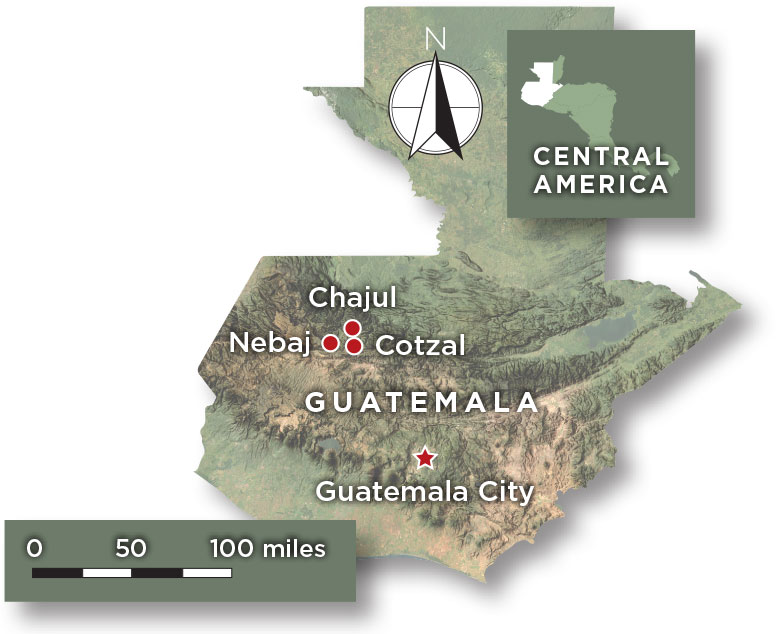Latin America
Related: About this forumDANCING DAYS OF THE MAYA
JANUARY/FEBRUARY 2025
By Daniel Weiss
In the mountains of Guatemala, murals depict elaborate performances combining Catholic and Indigenous
![]()
A mural in the home of Lucas Asicona in the small Guatemalan city of Chajul depicts a dwarf carrying a long stick, two musicians, and a dancer wearing a mix of Spanish and Maya attire. Part of the word tocadores, meaning “musicians,” appears at the top.
Photograph by R. Słaboński
When Lucas Asicona, a farmer and local historian living in the small city of Chajul in Guatemala’s western highlands, decided to renovate his three-room adobe house in 2003, he could hardly have expected to make a major artistic discovery. In one of the rooms, which contained a kitchen and several beds, fragments of plaster had been falling off the walls, revealing patches of paintings underneath. As Asicona removed more plaster using a machete, he was stunned to find a tableau covering three walls. The artwork featured a range of people dressed in outfits that mixed elements associated with both the Spaniards, who colonized the territory in the early sixteenth century, and the area’s Indigenous Ixil Maya. Researchers have come to recognize that the murals uncovered in Asicona’s house, as well as in a number of other residences in Chajul, are the product of a complex cultural amalgamation that took place in the city after the Spaniards arrived.
On the room’s western wall is a pair of seated musicians. One plays a short instrument, likely a flute or chirimía, an oboe-like woodwind introduced by the Spanish; the other beats a large rectangular drum. The musicians are trailed by a person who might be a dwarf carrying a long stick and they face a man who appears to be dancing while holding out a green bottle. The dwarf and the musicians wear typically Spanish attire—broad-brimmed hats, short mantles over one shoulder, caftans with puffed sleeves and ruffs, broad belts, slim trousers, and heeled shoes with pointed toes. By contrast, the dancer wears an outfit that blends Spanish trousers and heeled shoes with festive accoutrements associated with the Ixil Maya: a tasseled mantle made of feathers, a shirt with dangling strings, a long cloak sporting a representation of a white bird, and a decorative headdress.

This procession continues on the northern wall, which depicts 10 people, including five dancers wearing hybrid Spanish-Maya attire and two dwarfs wearing Spanish clothing and carrying long sticks. Another three men sit on chairs holding large, curved objects that may be trumpets made from gourds. These individuals sport headdresses adorned with horns or antlers as well as caftans, mantles, and trousers that are orange with black spots. Their pants resemble the jaguar pelts commonly worn by pre-Hispanic Maya kings. The eastern wall includes two panels, each depicting a pair of vases with seven flowers at the end of long stems with tiny leaves.
Asicona informed Guatemalan authorities of his discovery, and a few researchers traveled to Chajul, which is high in the Cuchumatanes Mountains, to document the paintings. But it wasn’t until 2015 that a team led by archaeologist Jarosław Źrałka of Jagiellonian University began to intensively study and conserve the murals. “When I first saw the paintings, I was really struck because I had never seen anything before that was comparable in terms of style, subject, or context,” says Źrałka. “On one hand, you had these amazing wall paintings, and, on the other hand, people were living alongside them.” While conserving the murals, the team found that similar scenes had been repainted on the walls seven times, and that the version Asicona had revealed was the earliest layer.

More:
https://archaeology.org/issues/january-february-2025/features/dancing-days-of-the-maya/
Easterncedar
(3,763 posts)I am very grateful, Judi Lynn, for all the interesting and enlightening articles you share. This is something just delightful on several levels.